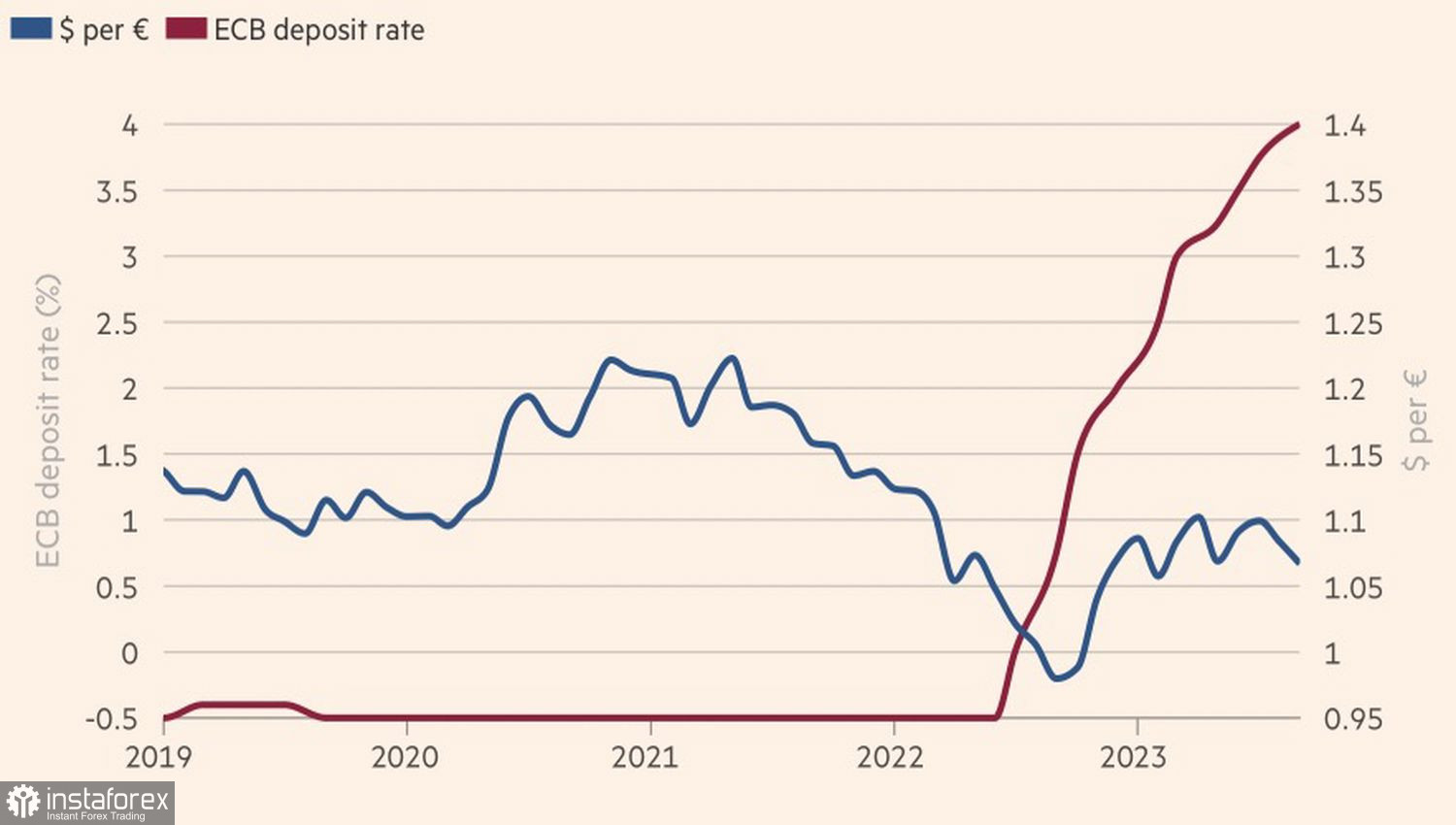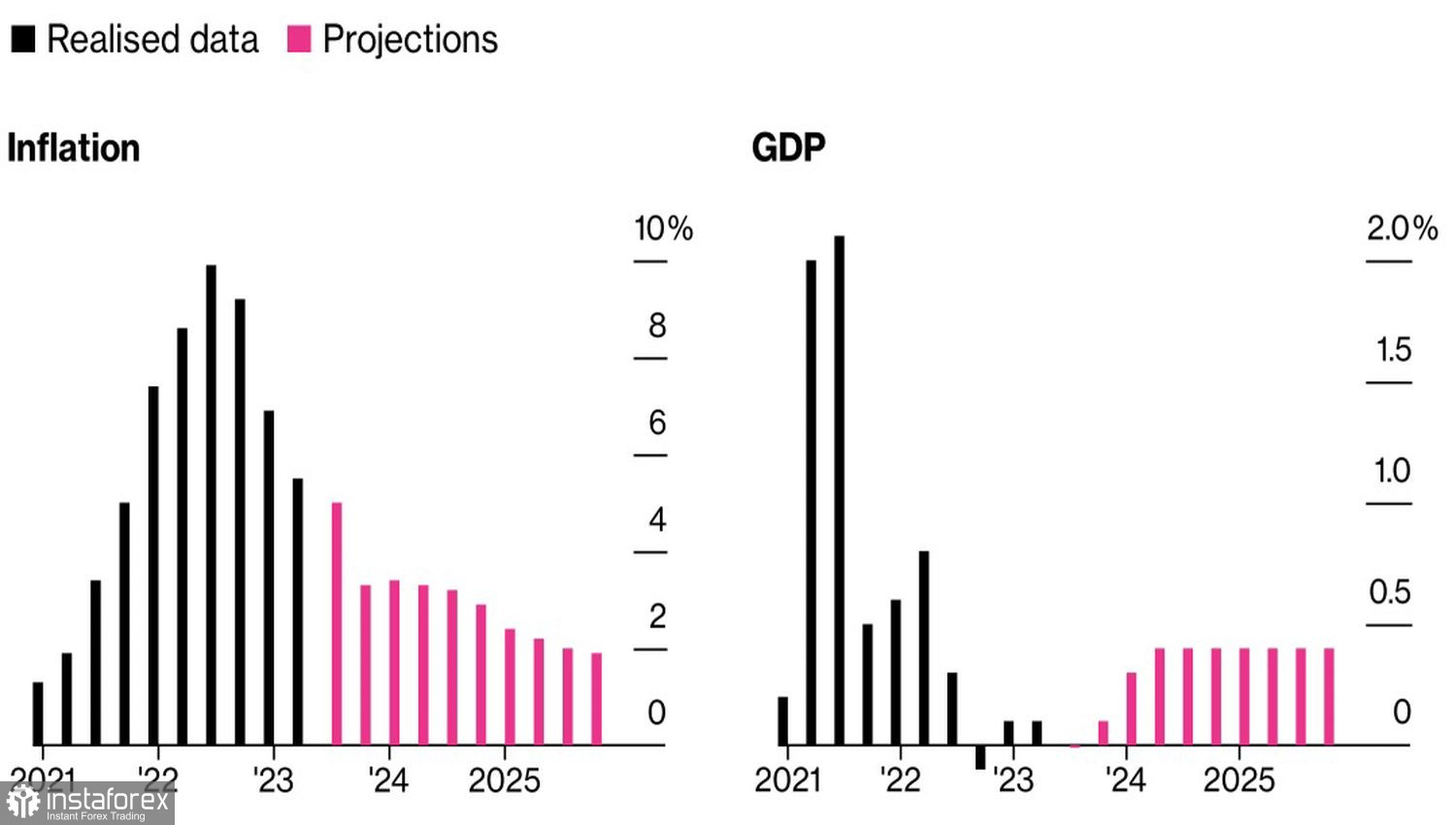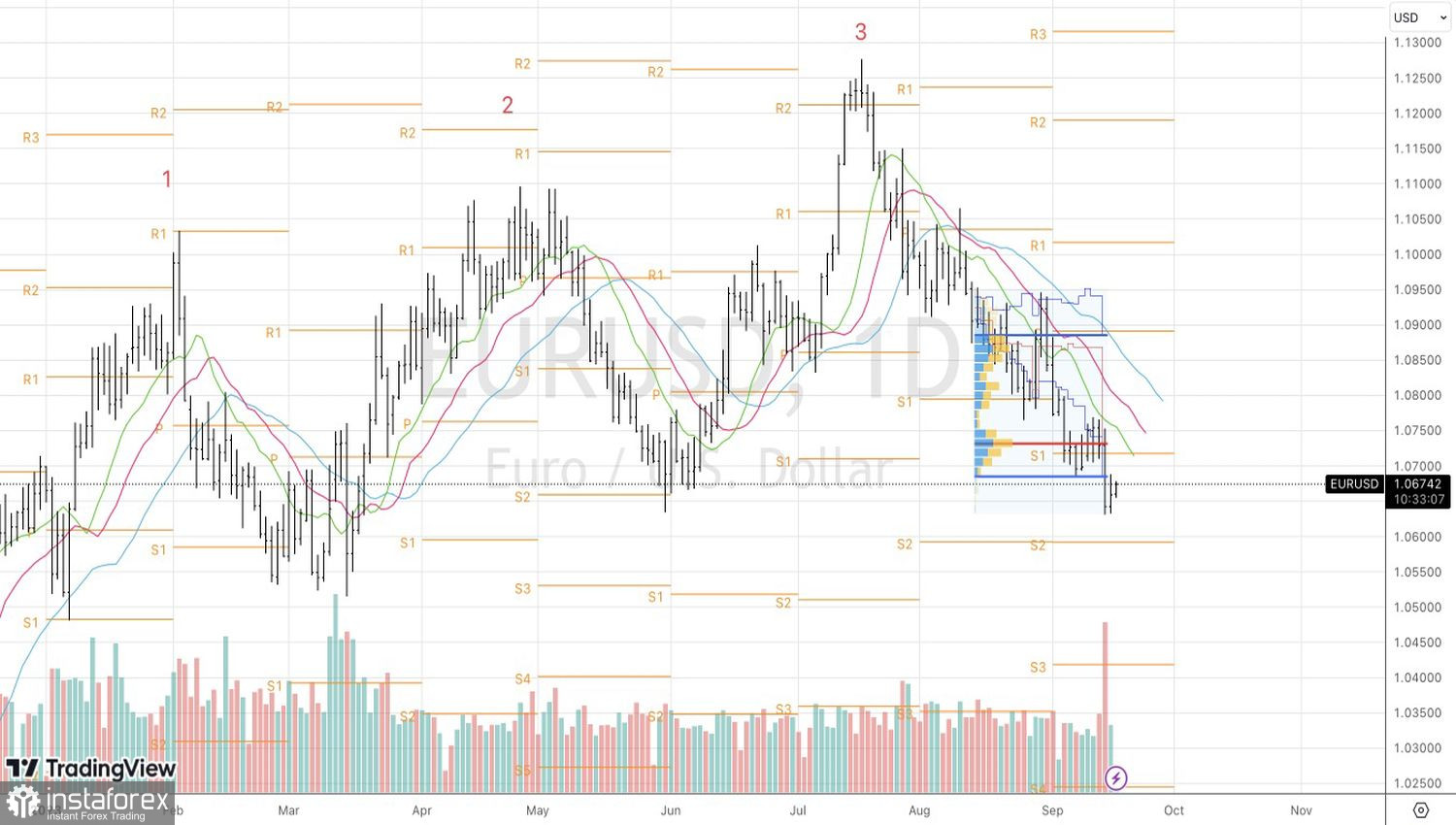No matter how hard the ECB tries, it can't jump higher than it can reach. As Deutsche Bank sarcastically noted, over 15 months, Christine Lagarde and her colleagues tightened monetary policy as much as the Bundesbank did since 1948. However, the situation remains the same. The Eurozone's economy is mired in stagflation and teeters on the brink of a recession. In such a situation, relying on a strong currency is extremely risky. Regardless of how many steps the European Central Bank takes towards monetary restriction, a return of EUR/USD to parity is not ruled out.
The ECB found it challenging to watch the euro tumble after raising the deposit rate by 25 basis points to 4%. In theory, everything happens the other way around. A strong currency usually contributes to slowing inflation. In the case of EUR/USD, the decline in the major currency pair may further heat up consumer prices. Especially given that the reduction in OPEC+ oil production, China's stimulus measures, and the stability of the U.S. economy have pushed Brent to its highest levels since November of the previous year.
Dynamics of the ECB deposit rate and the euro exchange rate

For central banks, this only means one thing—increased risks of a new inflation extreme. It is generally believed that monetary restriction slows down demand, leading to a decrease in price growth rates. However, at present, the theory that raising rates could lead to a reduction in supply and result in CPI growth is gaining ground. As a result, the Fed and other regulators may be forced to raise borrowing costs above current levels. As usual, the Federal Reserve is considered the leader. Its tough rhetoric following the September 19-20 meeting could strengthen the U.S. dollar.
What can the euro respond with? Alongside a weak economy, "bears" on EUR/USD are hindered by internal disputes within the Governing Council. There is no unified view on how to proceed. Portugal believes that inflation will reach the 2% target earlier than the ECB's recent forecasts. Lithuania and France argue that the central bank has already done all it can to combat high prices. It's time for governments to step in. Slovakia suggests that the deposit rate peak is near.
ECB forecasts for inflation and GDP

On the contrary, Latvia criticizes the markets for their idea of reducing borrowing costs by 75 basis points in 2024. Moreover, the Financial Times claims that three members of the Governing Council intend to continue the cycle of tightening monetary policy. Unfortunately, as recent events have shown, this doesn't help EUR/USD.

Now, all attention is focused on the Fed. There's little doubt that the central bank will leave the federal funds rate at 5.5% during the September 19-20 meeting. What will be crucial are the FOMC's forecasts for borrowing costs and Jerome Powell's rhetoric. Most likely, it will be hawkish.
Technically, after a prolonged decline on the daily chart, EUR/USD has formed an inside bar. This allows us to play it by placing pending orders to buy the euro from the level of $1.0685 and to sell it from $1.0635.
 English
English 
 Русский
Русский Bahasa Indonesia
Bahasa Indonesia Bahasa Malay
Bahasa Malay ไทย
ไทย Español
Español Deutsch
Deutsch Български
Български Français
Français Tiếng Việt
Tiếng Việt 中文
中文 বাংলা
বাংলা हिन्दी
हिन्दी Čeština
Čeština Українська
Українська Română
Română

